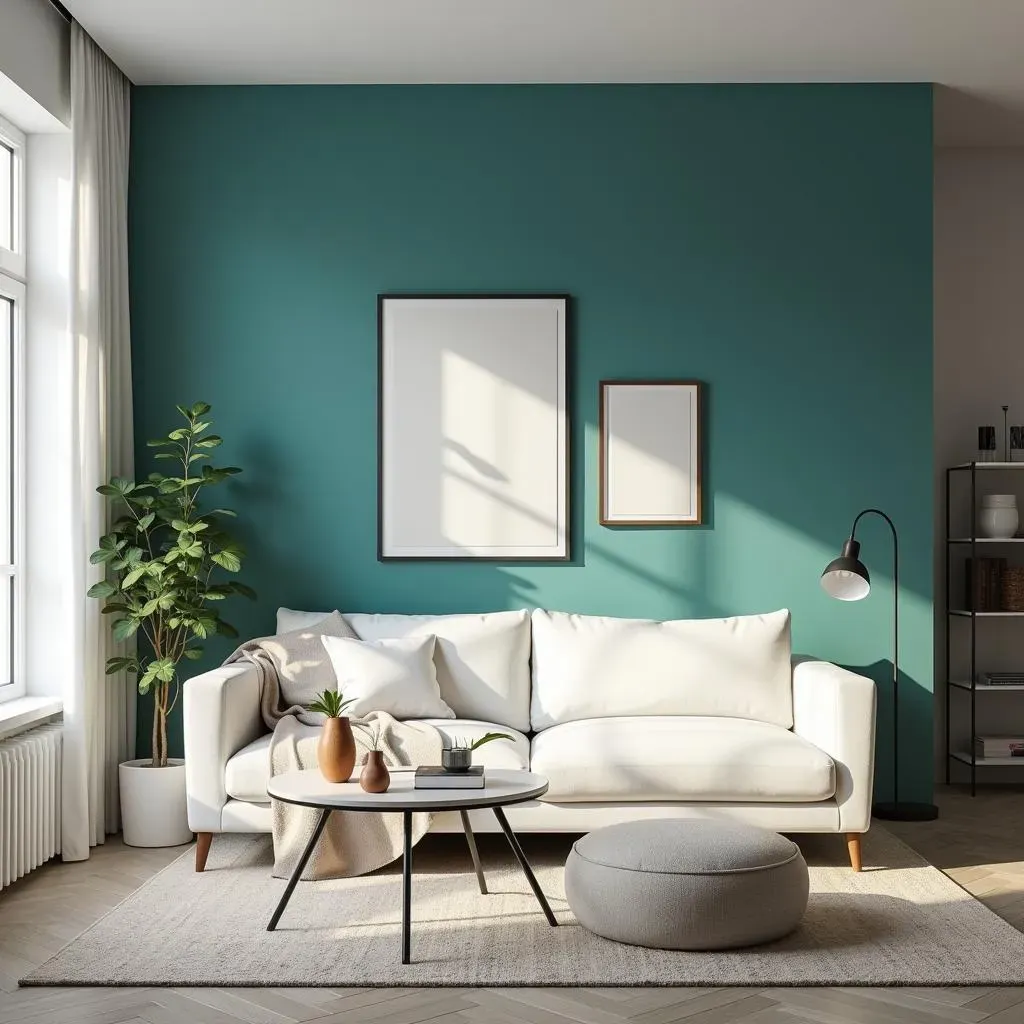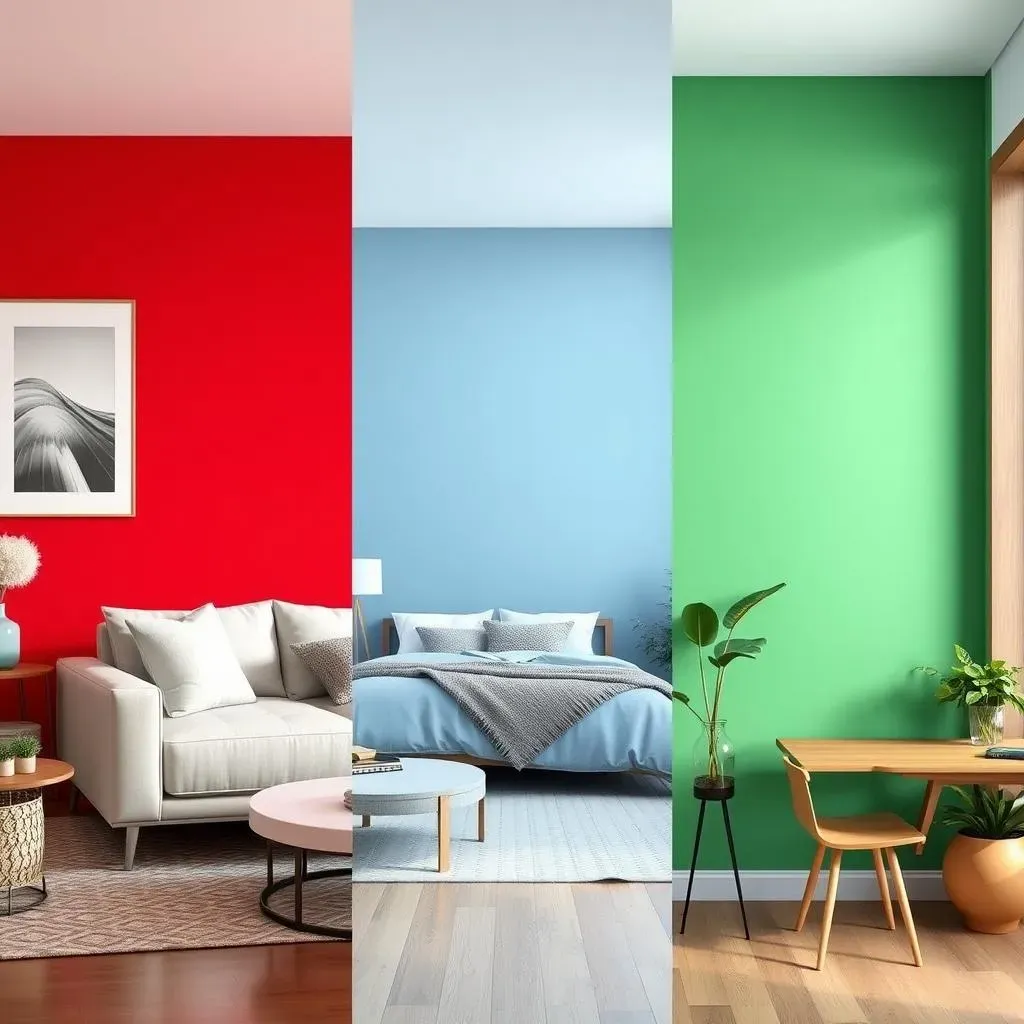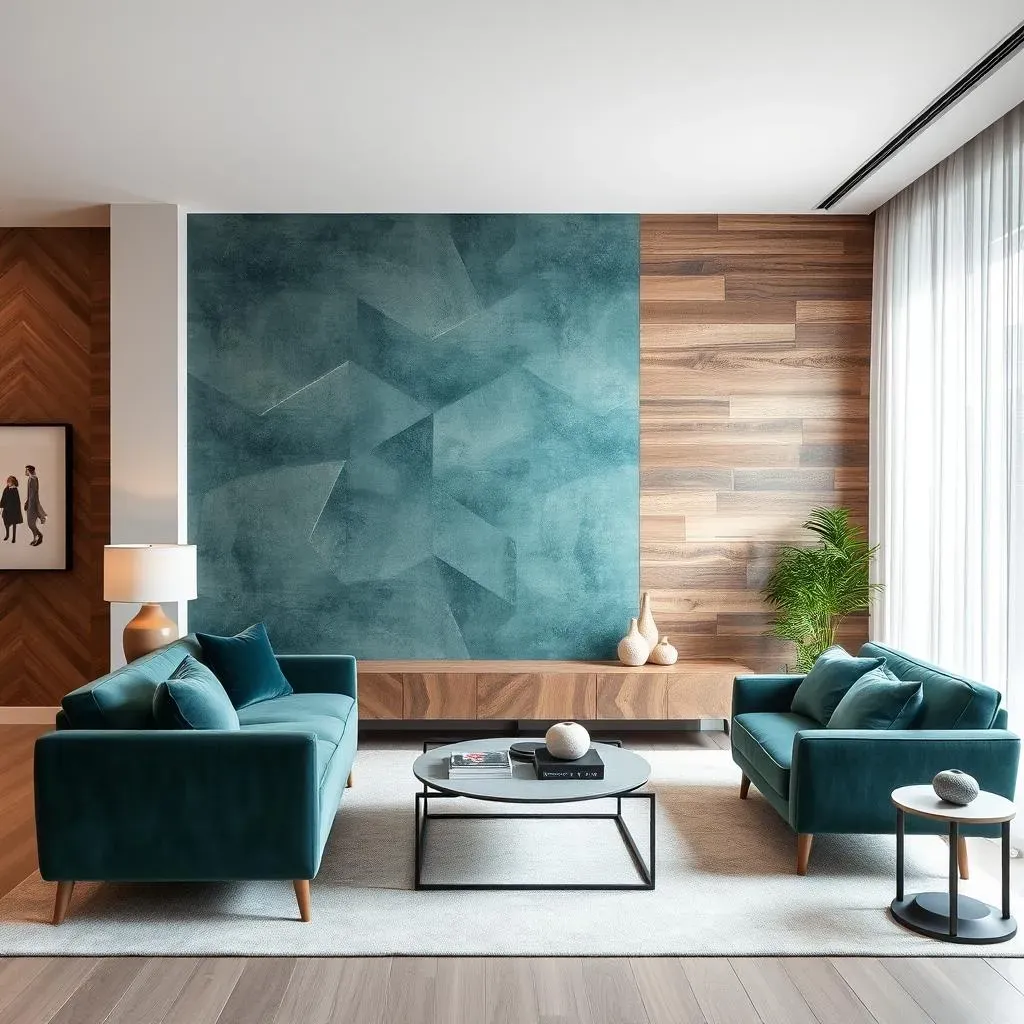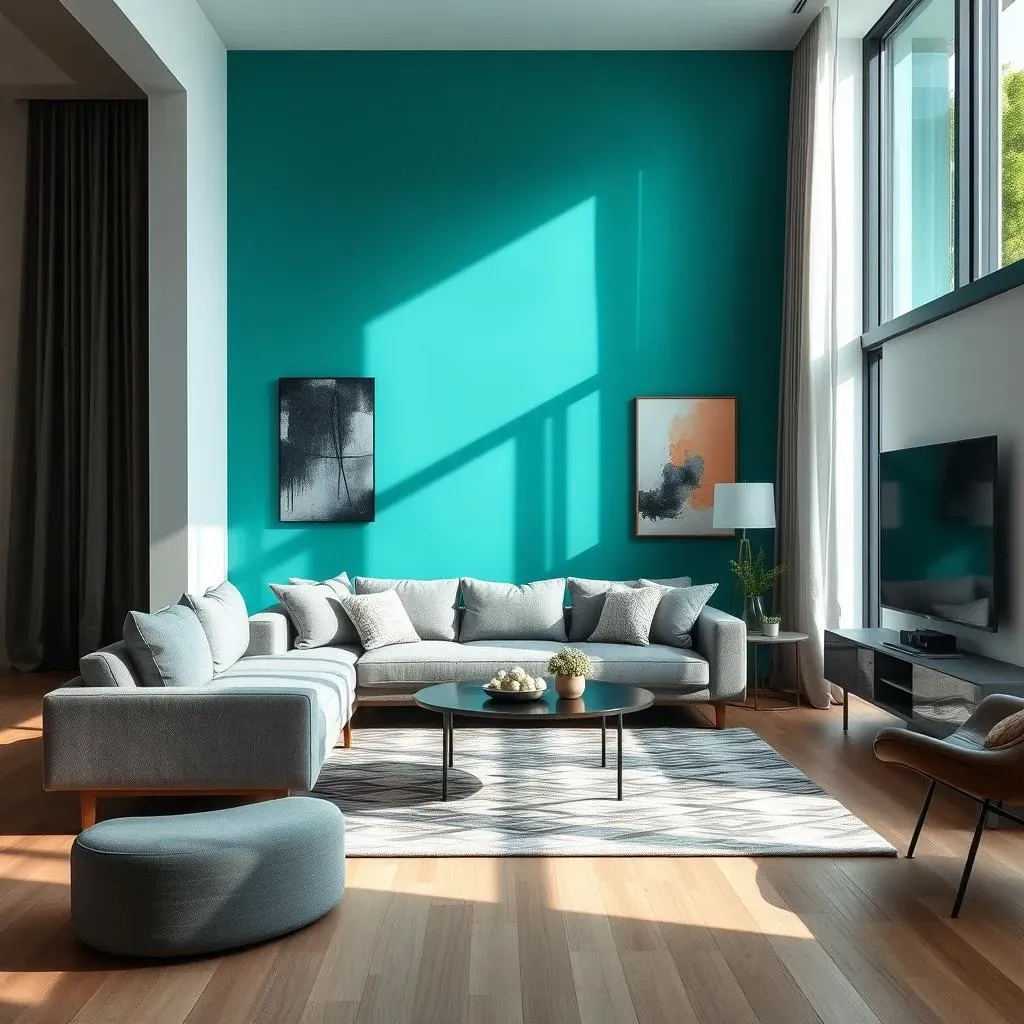Table of Contents
Tired of staring at the same four walls? Want to inject some personality and flair into your living space without a complete overhaul? Then it's time to explore the transformative power of interior paint ideas accent walls! An accent wall is more than just a splash of color; it's a statement piece, a focal point that can dramatically alter the mood and perception of a room. Whether you're a seasoned DIY enthusiast or a complete beginner, this guide will arm you with the inspiration and knowledge to create a stunning accent wall that reflects your unique style.
Why Choose Accent Walls: Interior Paint Ideas to Transform Your Space

Why Choose Accent Walls: Interior Paint Ideas to Transform Your Space
Creating a Focal Point with Interior Paint
so you're thinking about spicing things up, huh? Accent walls are seriously one of the easiest ways to make a statement. They're like the rockstar of interior design – instantly grabbing attention and setting the tone for the entire room. Instead of all four walls blending together in a wash of beige (no offense to beige lovers!), an accent wall strategically draws the eye, creating a focal point that anchors the space. It's a simple trick, but it works wonders in making a room feel more intentional and designed.
Think about it: a living room with a fireplace instantly has a natural focal point. But what if you don't have a fireplace? Enter the accent wall! By painting one wall a bold color, adding a textured treatment, or even creating a gallery wall, you can achieve the same effect. It's about guiding the eye and creating a sense of visual hierarchy. Plus, it's way less commitment than redoing an entire room. You can test out bold colors or patterns without the fear of overwhelming the space.
Defining Spaces and Adding Depth with Paint
Beyond just looking pretty, accent walls are surprisingly practical. They can actually help define different areas within a larger space. Got an open-concept living and dining area? Use an accent wall to visually separate the two zones. A dark accent wall behind the dining table can create a cozy, intimate dining nook, while a lighter color in the living area keeps things bright and airy. It's all about using color to create subtle boundaries without actually building any physical barriers.
And let's talk about depth! Accent walls can be used to trick the eye and make a room feel larger or more interesting. A dark accent wall at the far end of a narrow hallway can make it appear shorter and less tunnel-like. Conversely, a light-colored accent wall can make a small room feel more spacious by reflecting light and creating the illusion of depth. It's like a magic trick for your walls!
Benefit | Description |
|---|---|
Focal Point | Draws the eye and creates visual interest. |
Space Definition | Separates different areas in an open concept. |
Adds Depth | Can make a room feel larger or cozier. |
DIY Accent Wall Techniques: From Faux Finishes to Geometric Designs

DIY Accent Wall Techniques: From Faux Finishes to Geometric Designs
Faux Finishes: Elevate Your Walls with Minimal Effort
so you're ready to ditch the plain painted wall, but maybe you're not quite ready for something super complicated. Faux finishes are your friend! These techniques let you mimic the look of high-end materials like Venetian plaster or aged brick without the hefty price tag or the need for specialized skills. Think of it as "fake it 'til you make it" for your walls. One of the easiest and most popular faux finishes right now is limewash. It gives your walls this soft, chalky texture that's super dreamy and romantic. Plus, it's incredibly forgiving, so even if you mess up, it just adds to the character.
But limewash is just the tip of the iceberg. You can also try techniques like rag rolling, sponge painting, or color washing to create subtle textures and variations in color. The key is to experiment with different tools and techniques to find what you like best. Don't be afraid to grab some cheap paint and practice on a piece of cardboard before you commit to your wall. And remember, the goal is to create a subtle, textured effect, not a Jackson Pollock masterpiece (unless that's your thing, of course!).
Geometric Designs: Bold Patterns for a Modern Look
Feeling a little more adventurous? Geometric designs are a fantastic way to add a bold, modern touch to your space. We're talking stripes, chevrons, triangles, hexagons – the possibilities are endless! The key to pulling off a geometric accent wall is careful planning and precise execution. You'll need to map out your design beforehand, using painter's tape to create crisp, clean lines. This is where patience comes in handy, because rushing the taping process will only lead to frustration and wonky lines later on.
Once your design is taped off, it's time to paint! Use a high-quality paint in a contrasting color to really make your geometric pattern pop. Consider the overall color scheme of your room and choose colors that complement your existing furniture and décor. And remember, less is often more. A simple geometric pattern in a single color can be just as effective as a complex design with multiple colors. Don't be afraid to start small and work your way up to something more ambitious.
Technique | Description | Difficulty |
|---|---|---|
Limewash | Soft, chalky texture | Easy |
Stripes | Classic and versatile | Medium |
Geometric | Modern and bold | Hard |
Beyond Paint: Texture and Dimension for a Unique Wall
Alright, let's think outside the paint can for a minute. Who says an accent wall has to be just paint? You can add serious visual interest and tactile appeal by incorporating texture and dimension. Think about board and batten, a classic wall treatment that involves installing vertical or horizontal strips of wood to create a decorative pattern. It's a relatively simple project that can add a ton of character to a room. Or how about shiplap? This rustic-chic look is perfect for creating a cozy, farmhouse vibe.
But don't stop there! You can also use materials like fabric, wallpaper, or even reclaimed wood to create a truly unique accent wall. A textured wallpaper with a subtle pattern can add depth and dimension without being too overwhelming. Or, for a more dramatic effect, consider creating a gallery wall with a mix of framed artwork, photographs, and decorative objects. The key is to experiment and find materials that reflect your personal style and complement the overall aesthetic of your home.
Color Psychology: Selecting the Perfect Paint Colors for Your Accent Wall

Color Psychology: Selecting the Perfect Paint Colors for Your Accent Wall
Red: The Bold and Energetic Choice
Alright, let's talk color psychology! Choosing the right color for your accent wall is about way more than just picking your favorite shade. Colors have the power to evoke emotions, influence moods, and even affect our behavior. Red, for example, is a bold and energetic color that's often associated with passion, excitement, and even danger. It's a great choice for a living room or dining room where you want to create a sense of drama and excitement. But be careful not to overdo it, as too much red can be overwhelming or even agitating. A deep, rich red can add warmth and sophistication, while a brighter red can inject a playful, youthful energy.
If you're considering red for your accent wall, think about the overall style of your room and the kind of mood you want to create. Red pairs well with neutral colors like gray, white, and black, which can help to balance its intensity. You can also use red as an accent color in your furniture and décor to tie the whole look together. Just remember to use it sparingly and strategically to avoid creating a space that feels chaotic or overwhelming.
Blue: Calm, Cool, and Collected
On the opposite end of the spectrum, we have blue – a color that's often associated with calmness, tranquility, and stability. Blue is a great choice for bedrooms, bathrooms, or any space where you want to create a sense of relaxation and serenity. Lighter shades of blue can make a room feel more spacious and airy, while darker shades can create a more intimate and cozy atmosphere. Think about a soft, pale blue for a bedroom to promote restful sleep, or a deep navy blue for a home office to create a sense of focus and productivity.
Blue is also a versatile color that pairs well with a variety of other colors. It looks great with white, gray, beige, and even pops of yellow or coral. When choosing a blue for your accent wall, consider the amount of natural light in the room. Darker shades of blue can make a room feel smaller and darker, so they're best suited for spaces with plenty of natural light. Lighter shades of blue, on the other hand, can help to brighten up a dark room and make it feel more inviting.
Color | Psychological Effect | Best Room |
|---|---|---|
Red | Energetic, passionate | Living Room, Dining Room |
Blue | Calm, tranquil | Bedroom, Bathroom |
Yellow | Happy, optimistic | Kitchen, Playroom |
Green: Nature's Neutral
If you're looking for a color that's both calming and refreshing, green is an excellent choice. Green is associated with nature, growth, and harmony, making it a versatile option for almost any room in your home. It's particularly well-suited for spaces where you want to create a sense of balance and well-being. A soft, muted green can create a serene and inviting atmosphere in a living room, while a brighter, more vibrant green can add a pop of energy to a kitchen or home office.
Green also works well as a neutral color, pairing beautifully with a wide range of other hues. It complements natural materials like wood and stone, making it a great choice for rooms with rustic or organic décor. You can also use green as a backdrop for pops of color like yellow, orange, or purple. When choosing a green for your accent wall, consider the undertones of the color. Some greens have warm, yellow undertones, while others have cool, blue undertones. Choose a green that complements the existing colors in your room and creates the overall mood you're trying to achieve.
Beyond Paint: Creative Accent Wall Ideas with Texture and Dimension

Beyond Paint: Creative Accent Wall Ideas with Texture and Dimension
Wallpaper: Patterns, Textures, and Visual Intrigue
so you're thinking, "Wallpaper? Isn't that what my grandma had?" Think again! Wallpaper has made a major comeback, and it's not your grandma's floral print anymore (unless that's your vibe, then rock it!). We're talking bold geometric patterns, textured grasscloth, even murals that transport you to another world. Wallpaper is a fantastic way to add instant personality and visual intrigue to your space. Plus, it's a lot easier to install than you might think. There are tons of peel-and-stick options that make it a breeze to transform your wall in an afternoon.
But with so many options, how do you choose the right wallpaper for your accent wall? Consider the size of your room and the overall style of your décor. A large, bold pattern can be overwhelming in a small space, while a subtle texture can add depth without being too distracting. Think about the colors in your room and choose a wallpaper that complements your existing furniture and accessories. And don't be afraid to experiment! Wallpaper is a relatively low-commitment way to try out a new look, so have fun and let your personality shine.
Textured Materials: From Wood to Fabric
Ready to take your accent wall to the next level? Let's talk texture! Incorporating textured materials like wood, fabric, or even metal can add a whole new dimension to your space. Imagine a reclaimed wood accent wall in a rustic living room, or a plush velvet headboard wall in a luxurious bedroom. The possibilities are endless! The key is to choose materials that complement your existing décor and create the overall mood you're trying to achieve.
For a more budget-friendly option, consider using textured paint or even creating your own DIY textured wall treatment. There are tons of tutorials online that show you how to create faux brick, stone, or even concrete walls using simple materials like joint compound and paint. Or, for a softer look, try draping fabric over a frame to create a unique and eye-catching accent wall. No matter what materials you choose, adding texture is a surefire way to create a statement piece that will wow your guests.
Material | Style | Effect |
|---|---|---|
Wallpaper | Modern, eclectic | Adds pattern and color |
Reclaimed Wood | Rustic, farmhouse | Adds warmth and texture |
Fabric | Luxurious, bohemian | Adds softness and dimension |
The Final Coat: Bringing Your Accent Wall Vision to Life
With a little creativity and the right know-how, transforming a room with interior paint ideas accent walls is within reach for anyone. From understanding the impact of color to mastering DIY techniques, you now have the tools to create a space that reflects your unique personality and style. So, don't be afraid to experiment, embrace bold choices, and most importantly, have fun with the process. Your perfect accent wall awaits – go ahead and make it a reality!
